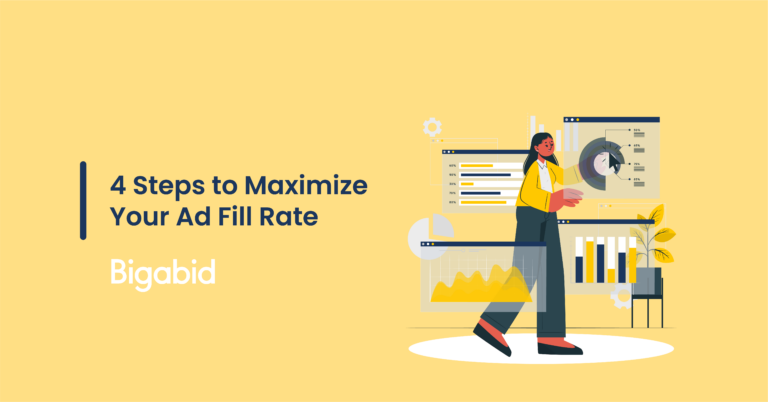
App developers depend on a steady stream of ad revenue to be in business. Besides working with ad networks and partners to deliver the highest eCPM, publishers need to achieve the highest possible ad fill rates to maximize their ad revenue.
Fill rate in advertising (or ad fill rate) is an app metric that measures ad network performance. It is the percentage of ad requests that are filled by the ad networks an app developer is working with. It’s calculated by dividing the number of ad impressions an app actually serves, by the number of times an app requested an ad from a network.
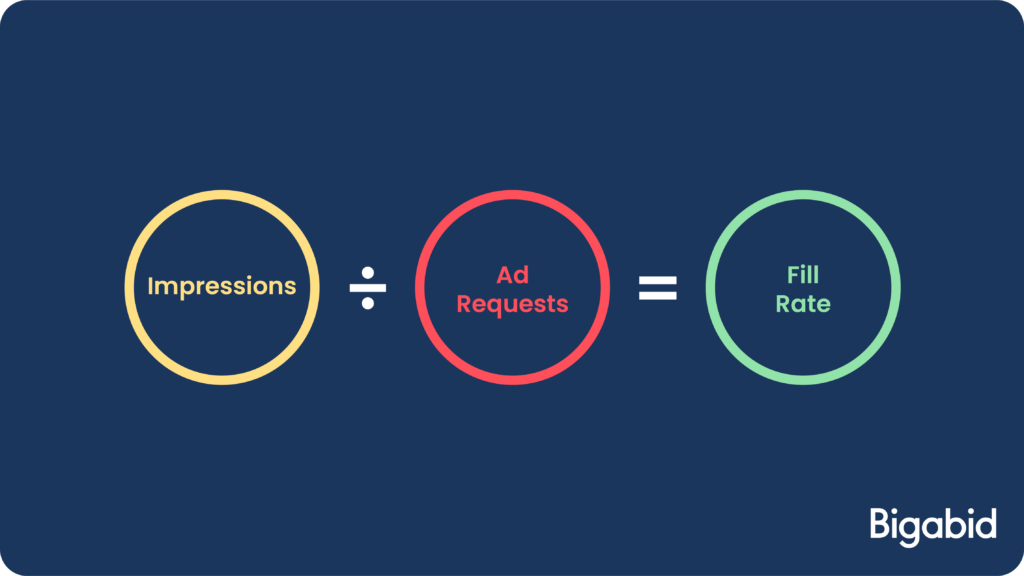
The higher the fill rate the more ad revenue for you. In addition, ad fill rate helps you understand how your inventory is being used, which can validate the demand for your inventory.
In a perfect world, an ad network’s fill rate would be 100% – meaning, every time an app requested an ad from the network, the ad network would send out an ad to show users. However, as we’ll learn below, this isn’t always the case.
You can aim at attaining a 100% ad fill rate, but that is not an easy feat to achieve. Advertisers work hard at getting their ads across to their target audience. They need to find publishers that best suit their interests, meaning no that not all your ads will receive placements.
However, you can get higher fill rates over time by employing several strategies that are proven to increase your ad fill rate to high percentage and maintain it.
Let’s say your app uses a lot of rewarded video ads. You would need to work with an ad network heavily partnered with advertisers that run rewarded video campaigns. Or let’s say your app has a huge following in the USA. You would need to partner with an ad network that has a lot of campaigns targeted at users in that geographic.
In addition, it’s important the ad network you choose can closely monitor network issue on the user end. If a user playing your social casino app goes offline your ad won’t get served. Better ad networks know with this happens and can serve the ad when the user is back online.
It is essential to understand your user base and your type of ad placements to find an ad network that best matches those qualities, but also look for their monitoring abilities and the technological abilities of their overall platform.
A crucial way to increase you’re a fill rate is to use several ad networks. If one ad network doesn’t fill an ad request another one may.
Mobile ad mediation is a mobile app monetization solution that allows publishers to set, manage, and optimize multiple mobile ad networks with only one SDK (software development kit) integration.
Without it, publishers need to manage each ad network through their individual SDKs and platforms, which can be in the hundreds. Having just one centralized platform streamlines reporting, optimization, and updates.
In terms of advertising, ad mediation platforms help publishers sell more inventory by having ad networks bid against each other. The publishers can then accept the highest bid, reach optimal fill rates, and therefore, increase CPMs (Cost Per Mile).
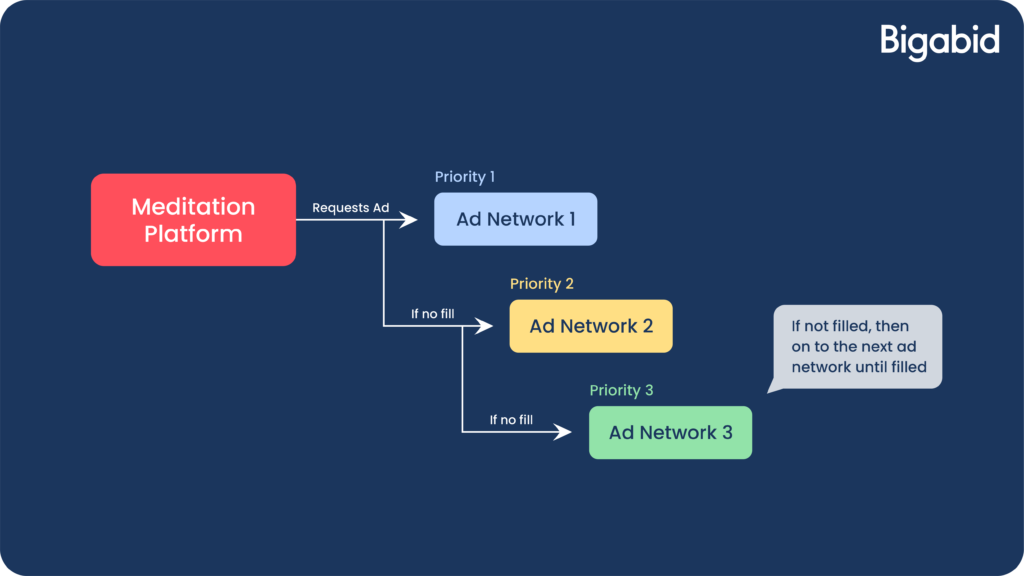
Read More About Mobile Ad Mediation.
A programmatic waterfall (aka daisy-chaining) starts with a chain of ad networks/exchanges arranged in order of their performance for any given publisher from top to bottom. The network/exchange performance is typically rated based on CPM, fill rate, latency, etc.. Ad impressions are passed from network to network, from top-rated to bottom-rated ones until they’re sold.
The primary disadvantage is that publishers receive a low yield (CPM/ROI) because the ad networks bid on impressions in a daisy-chain sequence instead of simultaneously in RTB (Real-Time Bidding). Once the impressions are passed (aka passback) to the next ad network, the bid floor decreases and the probability for higher CPM decreases as well. In addition, potentially higher CPMs in the following ad networks will be ignored since the waterfall chain stops when a bid is higher than the bid floor was set.
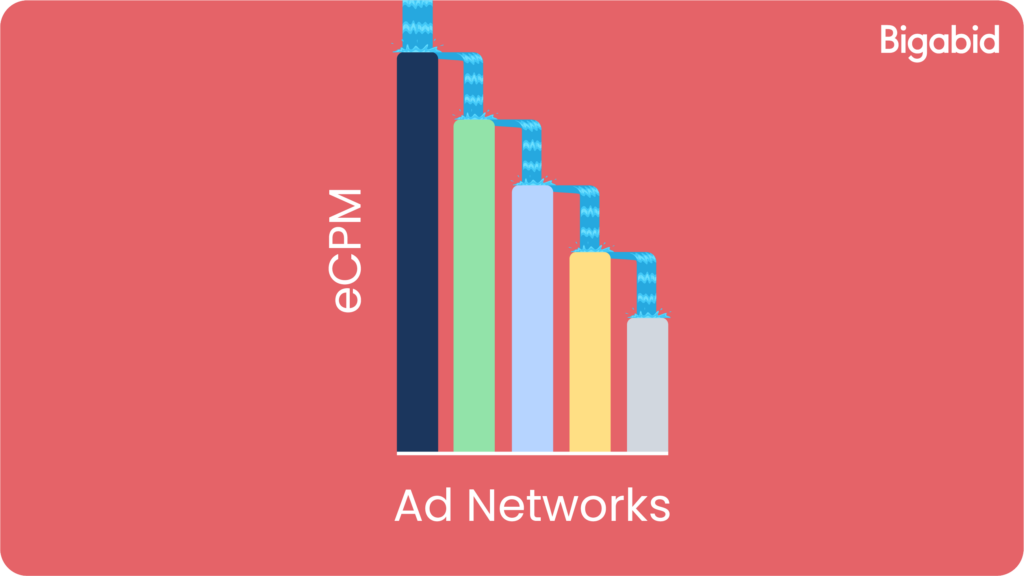
To solve the expensive problems of waterfall auctions for publishers, programmatic header bidding was developed, which is the industry standard today.
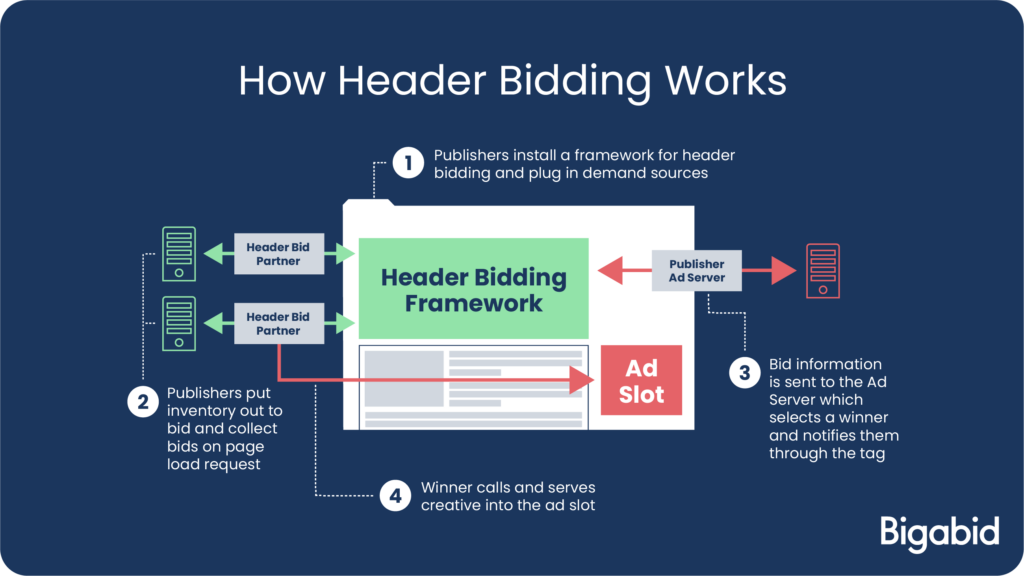
In programmatic header bidding publishers sell their inventory through multiple ad exchanges, giving multiple demand-side Partners the option to bid on that inventory (lots) simultaneously where the highest bid always wins.
In traditional waterfall bidding, if no ad network in your waterfall is willing to pay the CPM you preset the impression will be left unfilled. That’s why app developers are moving to header-bidding over the waterfall model. Multiple ad networks get the chance to bid on and serve every single impression so there’s a higher chance that the impression will be filled, which increases your ad fill rate.
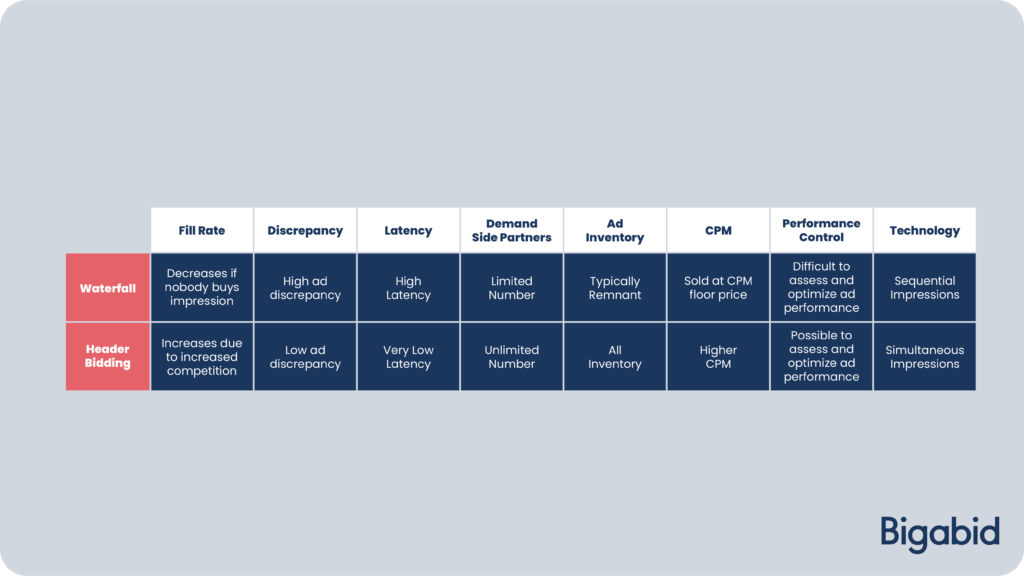
Read More About Waterfall vs Header-Bidding.
Ad fill rate is a critical app metric as it directly reflects how much ad revenue you can earn. It takes the right ad networks, mediation platform, and bidding approach to ensure you’re not losing out on any potential revenue. Get in touch if you like to learn more on how we can help maximize your ad fill rate.